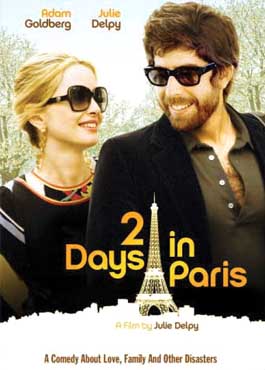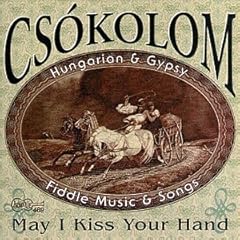






Yay Birthday!
lists, reviews, nostalgia, paradox and smoking clowns
 Shannon Presler was awesome enough to invite me to write about a favorite book- and I ate that assignment up like candy- like a box of Runts. Yum. He also was sweet enough to come up with my post's title and my bio as well (which, if I'd written it myself, would be ickily self-aggrandizing, but from him, makes me smile)
Shannon Presler was awesome enough to invite me to write about a favorite book- and I ate that assignment up like candy- like a box of Runts. Yum. He also was sweet enough to come up with my post's title and my bio as well (which, if I'd written it myself, would be ickily self-aggrandizing, but from him, makes me smile) Hearing Mark's Endings: Listening to Ancient Popular Texts Through Speech Act Theory by Bridget Gilfillan Upton
Hearing Mark's Endings: Listening to Ancient Popular Texts Through Speech Act Theory by Bridget Gilfillan Upton Also in the mail, my voting ballot. Here's hoping third times the charm with presidential elections- the last two had address snafus that left my votes uncounted. I could have changed history...
Also in the mail, my voting ballot. Here's hoping third times the charm with presidential elections- the last two had address snafus that left my votes uncounted. I could have changed history...
 Erik Friedlander's
Erik Friedlander's  Csokolom
Csokolom 

 Frisbees are Great Because: : ) they allow me to fly with them. to leave the ground and soar as they bend and turn and coast through the air, as my imagination becomes their reality.
Frisbees are Great Because: : ) they allow me to fly with them. to leave the ground and soar as they bend and turn and coast through the air, as my imagination becomes their reality.
 Chase is always asking tough questions of himself and bristles under requirements to be anything that he is not (aka shallow). As such, I wanted his scarf to reflect that, and admittedly (to him and to myself) I kind of jumped overboard first time round. I tried, with a 5 color spectrum, to capture some of the Chase dynamic. But when it came to actually wearing it, Chase felt there was just too much going on.
Chase is always asking tough questions of himself and bristles under requirements to be anything that he is not (aka shallow). As such, I wanted his scarf to reflect that, and admittedly (to him and to myself) I kind of jumped overboard first time round. I tried, with a 5 color spectrum, to capture some of the Chase dynamic. But when it came to actually wearing it, Chase felt there was just too much going on. 
 So this time round, I met Chase at the yarn store and let him pick out the yarns (still a collaborative process) and what we ended up with were some nice wood, rust and steel colors. Once I knit it up, I realized that this made more sense. Don't give more complexity to a contemplative, give him the basics. So here's the Existentialist's Essentials, for my favorite Chasey-Pooh! I hope this one works out for you.
So this time round, I met Chase at the yarn store and let him pick out the yarns (still a collaborative process) and what we ended up with were some nice wood, rust and steel colors. Once I knit it up, I realized that this made more sense. Don't give more complexity to a contemplative, give him the basics. So here's the Existentialist's Essentials, for my favorite Chasey-Pooh! I hope this one works out for you.


 The Making of: Richard's scarf was the last I knit before my summer hiatus and also my first long distance scarfing. But though we were states apart, I wasn't lacking in info or inspiration for Richard, since we've been acting like childish adults together since we were 11. However, the key to this one was a comment my NYC roommate Kiko made about Richard (he magicly moved to NYC while I was there too) when she said he reminded her of Snow White's Prince. We all concurred. Hence my yarn reinterpretation of Disney's primary-coloured Prince for one of my most dashing (and simulatneously absurd) friends. As a San Diegan, its hard to know when Richard will ever get to where this, but I loved the chance to make it for him. What better way to show your love for someone who's let you call them Spmulragus (Sugar Lumps spelled backwards) for the last eighteen years?
The Making of: Richard's scarf was the last I knit before my summer hiatus and also my first long distance scarfing. But though we were states apart, I wasn't lacking in info or inspiration for Richard, since we've been acting like childish adults together since we were 11. However, the key to this one was a comment my NYC roommate Kiko made about Richard (he magicly moved to NYC while I was there too) when she said he reminded her of Snow White's Prince. We all concurred. Hence my yarn reinterpretation of Disney's primary-coloured Prince for one of my most dashing (and simulatneously absurd) friends. As a San Diegan, its hard to know when Richard will ever get to where this, but I loved the chance to make it for him. What better way to show your love for someone who's let you call them Spmulragus (Sugar Lumps spelled backwards) for the last eighteen years? 


 So I'm enjoying my full immersion into the Joss Whedon Universe (or more properly, Whedonverse) as I do research for a paper on Firefly (in collboration with This Guy) and work my way through Whedon's original Buffy and its spin-off/parrallel show Angel. Spending time in all three 'verses at once really brings Whedon's core themes to the surface, and he just keeps blowing my mind.
So I'm enjoying my full immersion into the Joss Whedon Universe (or more properly, Whedonverse) as I do research for a paper on Firefly (in collboration with This Guy) and work my way through Whedon's original Buffy and its spin-off/parrallel show Angel. Spending time in all three 'verses at once really brings Whedon's core themes to the surface, and he just keeps blowing my mind. Most recently I watched the Angel episode "Are You Now or Have you Ever Been..." (nodding to the Mcarthyism themes throughout the episode) which is a largely a flashback to the 1950's wherein Angel, (the vampire with a soul) is keeping a low profile in LA. When a scene opened on the LA Observatory, I immediately said "Okay- how are they going to reference "Rebel Without A Cause"? You really can't shoot anything involoving the Griffith Observatory without evoking the climactic scenes from the James Dean classic.
Most recently I watched the Angel episode "Are You Now or Have you Ever Been..." (nodding to the Mcarthyism themes throughout the episode) which is a largely a flashback to the 1950's wherein Angel, (the vampire with a soul) is keeping a low profile in LA. When a scene opened on the LA Observatory, I immediately said "Okay- how are they going to reference "Rebel Without A Cause"? You really can't shoot anything involoving the Griffith Observatory without evoking the climactic scenes from the James Dean classic.  Well, the camera pulls back to reveal David Boreanaz as Angel wearing the iconic red windbreaker, white T-shirt and dark jeans of James Dean's Rebel character Jim. Going further, we hear the female character introduce herself as Judy- also the name of Natalie Wood's character in Rebel. Judy (who looks strikingly like Natalie Wood as well) goes on to talk about the planetarium show about the end of the world, which is also the show the students in Rebel watch at the beginning of the film. So no question about it- Whedon is unabashedly underlining Rebel Without a Cause.
Well, the camera pulls back to reveal David Boreanaz as Angel wearing the iconic red windbreaker, white T-shirt and dark jeans of James Dean's Rebel character Jim. Going further, we hear the female character introduce herself as Judy- also the name of Natalie Wood's character in Rebel. Judy (who looks strikingly like Natalie Wood as well) goes on to talk about the planetarium show about the end of the world, which is also the show the students in Rebel watch at the beginning of the film. So no question about it- Whedon is unabashedly underlining Rebel Without a Cause. But the intertextual detective in me started wondering why? If one text references another, then the intertext must have some significance of shared or contrasted meaning. But other than both stories having to do with people rejected by or rejecting society, the intertext just didn't make sense to me, not to the extent of its prominence. That's when I had to reflect on the idea of textual poaching, which Ian introduced to me in his paper on Fandom and the works of Joss Whedon. With textual poaching, it's not so much about drawing parallels between the two texts, but in sparking recognition for the viewer. Therefore, using the imagery, costumes and names from Rebel Without A Cause is really just paying honor to the iconic film and James Dean, and inviting the viewer to do the same.
But the intertextual detective in me started wondering why? If one text references another, then the intertext must have some significance of shared or contrasted meaning. But other than both stories having to do with people rejected by or rejecting society, the intertext just didn't make sense to me, not to the extent of its prominence. That's when I had to reflect on the idea of textual poaching, which Ian introduced to me in his paper on Fandom and the works of Joss Whedon. With textual poaching, it's not so much about drawing parallels between the two texts, but in sparking recognition for the viewer. Therefore, using the imagery, costumes and names from Rebel Without A Cause is really just paying honor to the iconic film and James Dean, and inviting the viewer to do the same. 
 What I'm not-so-on-the-same-page with is the action figures Fandom can lead to- this is the Angel figure made specifically from this episode. He's got the James Dean jacket on and comes with an ax, a noose and a liter of blood. You can make your toy Angel textually poach your GI Joes I guess.
What I'm not-so-on-the-same-page with is the action figures Fandom can lead to- this is the Angel figure made specifically from this episode. He's got the James Dean jacket on and comes with an ax, a noose and a liter of blood. You can make your toy Angel textually poach your GI Joes I guess.